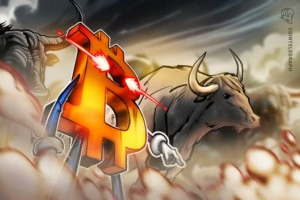Experiential artist duo Operator is at the forefront of a revolutionary movement in art. By leveraging Non-Fungible Tokens (NFTs), they are enabling collectors to own movement as an art object. This innovative approach addresses the enduring challenges faced by performance artists, who have traditionally struggled to monetize their ephemeral works.
Ania Catherine and Dejha Ti, the creative minds behind Operator, shared their insights on the integration of NFTs into performance art, highlighting how it addresses the struggle of digital artists. Catherine explained, “Prior to the advent of NFTs, digital artists were often relegated to the position of being in a service industry. They were working for various corporate sectors while creating art on the side. Performance artists face even more significant hurdles due to the fleeting essence of their craft.”
The essence of performance art is its transitory nature, involving the body, space, and collaboration. Catherine articulated the dilemma: “There’s really nothing to sell at the end of a performance, making it difficult to achieve financial sustainability.” Historically, to survive, performance artists have resorted to adjunct roles such as teaching dance, starring in commercials, or performing behind musicians. Operator’s innovative work with NFTs offers a new solution.
With NFTs, performance art can be transformed into permanent collectible pieces, allowing patrons to engage more intimately with the art form. “What does it look like if someone can own movement as an art object?” Catherine poses, sparking curiosity about the future of performance arts in a digital age. Their creative venture, Human Unreadable, combines choreography, generative art, blockchain, and cryptography, culminating in a live performance slated for the end of 2026.
This project places the human body at the core of the artwork. Each piece of the 400 in the collection embodies an underlying unique dance generated by an algorithm, drawing on the rich history of computational choreography. The integration of blockchain technology, particularly on the Ethereum network, presented unique challenges, but Operator persisted, finding innovative ways to store human movement data.
- Explore the intersection of dancing and technology.
- Understand the impact of NFTs on the art market.
- Discover how Operator is paving the way for performance art in the digital age.
Despite the current downturn in the NFT art market, with trading volumes plummeting from a historic $2.9 billion in 2021 to just $23.8 million in the first quarter of 2025, artists like Operator continue to explore the potential of this technology. Catherine noted, “Artists don’t create for market purposes but from curiosity, passion, and a need to express.” This spirit of creativity persists, illustrating that the essence of art transcends financial constraints.
As the art community navigates through these challenging times, the innovative strides taken by artists like Operator inspire a new appreciation for the marriage of blockchain technology and performance art. The future of art lies in embracing both tradition and technology, ensuring that even the most ephemeral works can find a lasting legacy in the digital realm.



